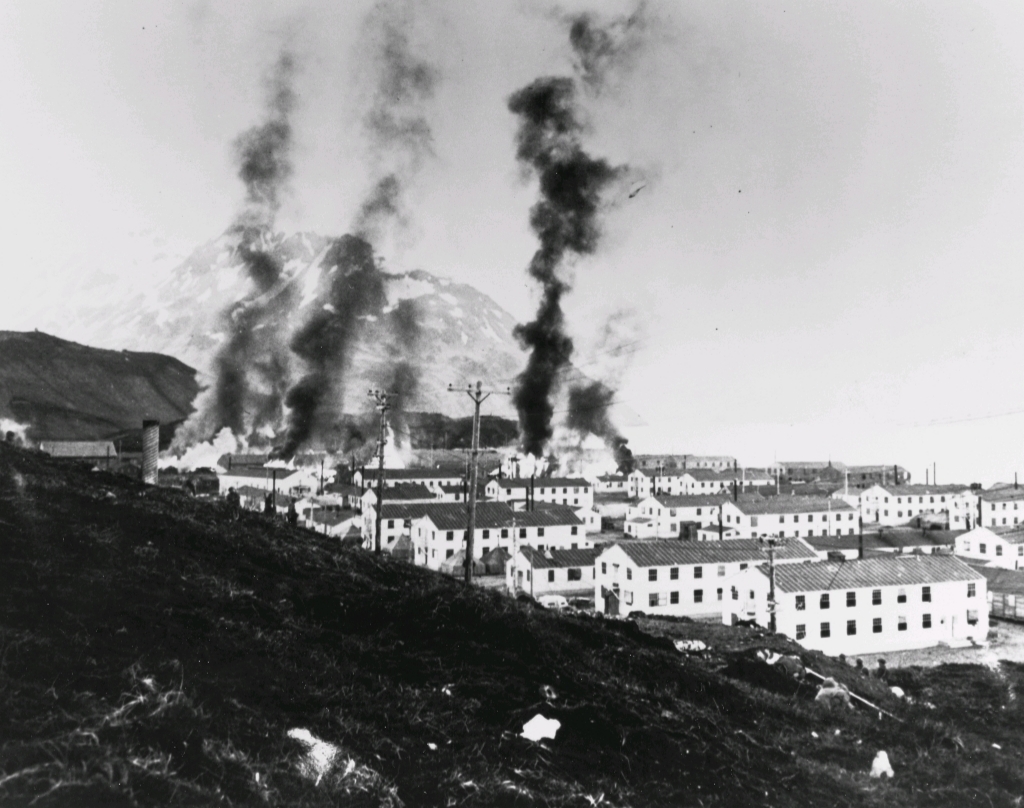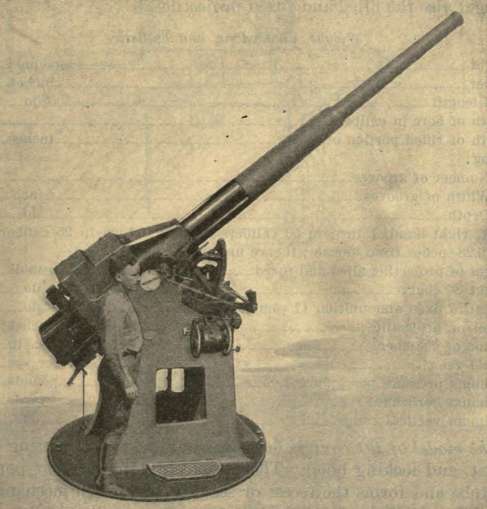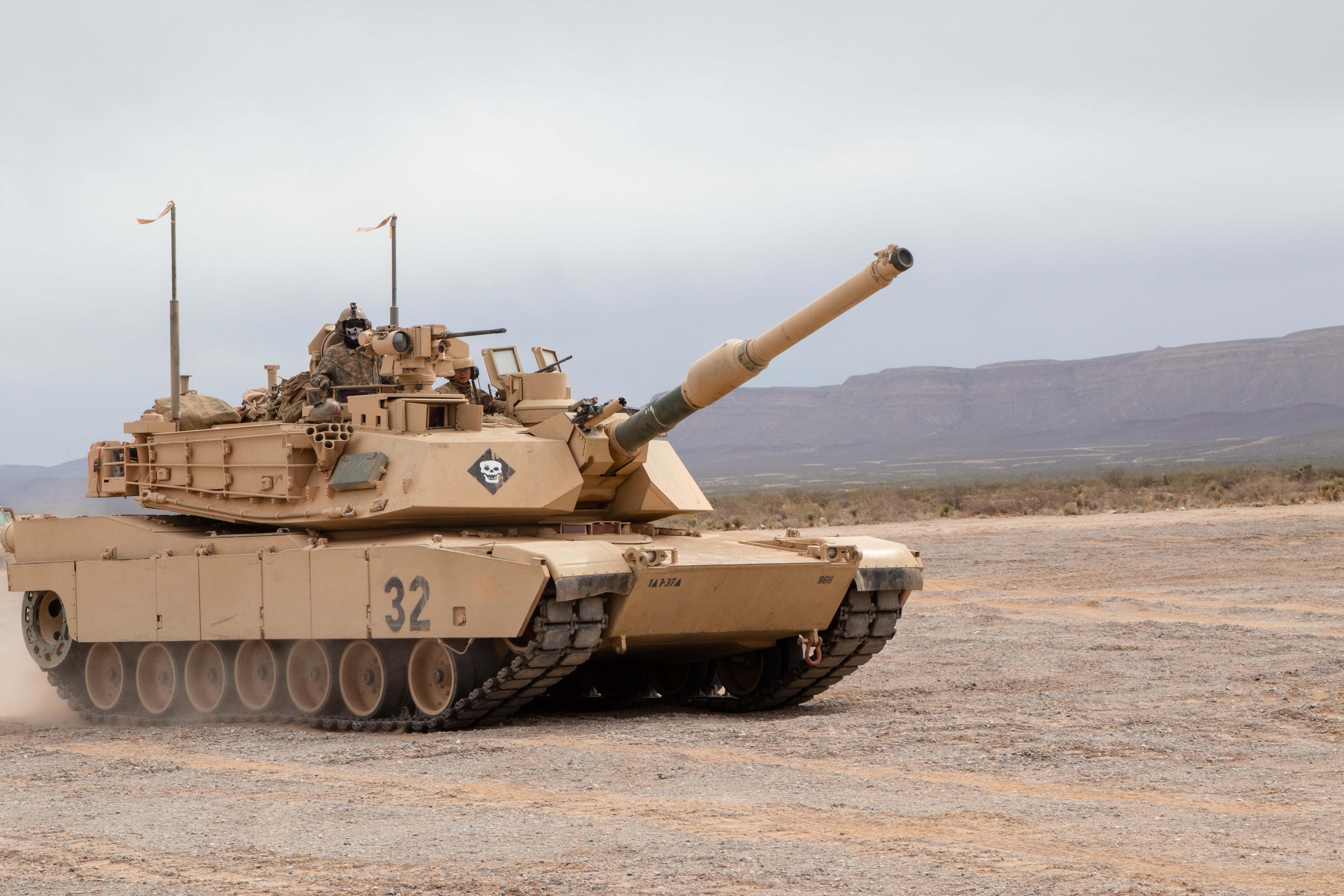|
Arkansas National Guard And World War II
The history of the Arkansas National Guard and World War II begins with the reorganization following World War I. The State first reorganized a provision unit, the 5th Arkansas, in order to provide a force to deal with domestic situations. As the Defense Department slowly implemented the massive changes and expansions outlined National Defense Act of 1916, the Arkansas National Guard was allowed to reorganize its war time units, including the 153rd Infantry Regiment, the 141st Machine Gun Battalion, and the 142nd Field Artillery. The Guard acquired its first permanent facilities and additional training during its annual encampments. During World War II, the entire Arkansas National Guard was activated and units saw duty in the Pacific and European theaters of conflict. Re-organization following WWI The effort to rapidly reorganize the Arkansas National Guard following World War I was a complicated task for two reasons, first the fact that the units mobilized for the war had ef ... [...More Info...] [...Related Items...] OR: [Wikipedia] [Google] [Baidu] |
World War I
World War I (28 July 1914 11 November 1918), often abbreviated as WWI, was one of the deadliest global conflicts in history. Belligerents included much of Europe, the Russian Empire, the United States, and the Ottoman Empire, with fighting occurring throughout Europe, the Middle East, Africa, the Pacific, and parts of Asia. An estimated 9 million soldiers were killed in combat, plus another 23 million wounded, while 5 million civilians died as a result of military action, hunger, and disease. Millions more died in genocides within the Ottoman Empire and in the 1918 influenza pandemic, which was exacerbated by the movement of combatants during the war. Prior to 1914, the European great powers were divided between the Triple Entente (comprising France, Russia, and Britain) and the Triple Alliance (containing Germany, Austria-Hungary, and Italy). Tensions in the Balkans came to a head on 28 June 1914, following the assassination of Archduke Franz Ferdin ... [...More Info...] [...Related Items...] OR: [Wikipedia] [Google] [Baidu] |
206th Coast Artillery Regiment
The 206th Field Artillery Regiment is a United States artillery regiment, currently represented in the Arkansas Army National Guard by the 1st Battalion, 206th Field Artillery, Headquartered at Russellville, Arkansas. The 1–206th FA is an element of the 39th Infantry Brigade Combat Team. The regiment's history begins with the creation of the 3rd Arkansas Infantry in 1917 as a part of the expansion of the guard following the Mexican Expedition and just before World War I. The unit was reorganized for World War I as the 141st Machine Gun Battalion, an element of the 39th Infantry Division (United States), 39th Infantry Division. The unit deployed to France but did not see combat before the end of the war. Between World War I and II, the unit was reorganized as the 206th Coast Artillery (Anti-Aircraft) and many of its units were stationed at state colleges. The 206th CA was mobilized for World War II and participated in the Battle of Dutch Harbor, Alaska, on 3 and 4 June 1942. Follo ... [...More Info...] [...Related Items...] OR: [Wikipedia] [Google] [Baidu] |
M2 Browning Machine Gun
The M2 machine gun or Browning .50 caliber machine gun (informally, "Ma Deuce") is a heavy machine gun that was designed towards the end of World War I by John Browning. Its design is similar to Browning's earlier M1919 Browning machine gun, which was chambered for the .30-06 cartridge. The M2 uses Browning's larger and more powerful .50 BMG (12.7 mm) cartridge. The design has had many designations; the official U.S. military designation for the current infantry type is Browning Machine Gun, Cal. .50, M2, HB, Flexible. It is effective against infantry, unarmored or lightly armored vehicles and boats, light fortifications, and low-flying aircraft. The gun has been used extensively as a vehicle weapon and for aircraft armament by the United States since the 1930s. It was heavily used during World War II, the Korean War, the Vietnam War, the Falklands War, the Soviet–Afghan War, the Gulf War, the Iraq War, and the War in Afghanistan. It is the primary heavy machine gun of NATO ... [...More Info...] [...Related Items...] OR: [Wikipedia] [Google] [Baidu] |
3-inch Gun
A 3-inch gun is a gun with a 3-inch bore. Examples include: * 3-inch M1902 field gun also M1904, M1905 * 3-inch gun M1903 - US coast defense gun, also M1898, M1902 seacoast gun *3"/50 caliber gun - US dual purpose naval gun *3"/23 caliber gun - US dual purpose naval gun *QF 3 inch 20 cwt The QF 3 inch 20 cwt anti-aircraft gun became the standard anti-aircraft gun used in the home defence of the United Kingdom against German airships and bombers and on the Western Front in World War I. It was also common on British warships ... - British anti-aircraft gun * 3-inch Gun M1918 - US anti-aircraft gun * 3-inch Gun M5 - US anti-tank gun {{SIA 76 mm artillery ... [...More Info...] [...Related Items...] OR: [Wikipedia] [Google] [Baidu] |
3-inch Gun M1918
The 3-inch gun M1918 was a United States 3-inch anti-aircraft gun that entered service in 1918 and served until it was largely superseded by the 3-inch anti-aircraft gun M3 in 1930, though the M1918 remained with some National Guard units until early in World War II. The M3 was subsequently replaced by the M1 90mm AA gun early in World War II, primarily during 1942. The M3 3" gun was later adapted for the anti-tank role, serving as the main armament of the M10 tank destroyer during World War II. The predecessor: 3-inch gun M1917 The 3-inch gun M1917 was the United States Army's first dedicated anti-aircraft gun, entering service during World War I. Only a few were built, as the similar 3-inch gun M1918 on a mobile mount was considered more useful and was produced in large numbers. Development of the M1917 started in 1915, and as the name implies, took two years to enter service. The gun was essentially an unmodified 3-inch M1903 (76.2 mm L/55) coastal-defense gun barrel ... [...More Info...] [...Related Items...] OR: [Wikipedia] [Google] [Baidu] |
Alaska
Alaska ( ; russian: Аляска, Alyaska; ale, Alax̂sxax̂; ; ems, Alas'kaaq; Yup'ik: ''Alaskaq''; tli, Anáaski) is a state located in the Western United States on the northwest extremity of North America. A semi-exclave of the U.S., it borders the Canadian province of British Columbia and the Yukon territory to the east; it also shares a maritime border with the Russian Federation's Chukotka Autonomous Okrug to the west, just across the Bering Strait. To the north are the Chukchi and Beaufort Seas of the Arctic Ocean, while the Pacific Ocean lies to the south and southwest. Alaska is by far the largest U.S. state by area, comprising more total area than the next three largest states (Texas, California, and Montana) combined. It represents the seventh-largest subnational division in the world. It is the third-least populous and the most sparsely populated state, but by far the continent's most populous territory located mostly north of the 60th parallel, with ... [...More Info...] [...Related Items...] OR: [Wikipedia] [Google] [Baidu] |
Aleutian Islands
The Aleutian Islands (; ; ale, Unangam Tanangin,”Land of the Aleuts", possibly from Chukchi language, Chukchi ''aliat'', "island"), also called the Aleut Islands or Aleutic Islands and known before 1867 as the Catherine Archipelago, are a chain of 14 large volcanic islands and 55 smaller islands. Most of the Aleutian Islands belong to the U.S. state of Alaska, but some belong to the Russian Federal subjects of Russia, federal subject of Kamchatka Krai. They form part of the Aleutian Arc in the Northern Pacific Ocean, occupying a land area of 6,821 sq mi (17,666 km2) and extending about westward from the Alaska Peninsula toward the Kamchatka Peninsula in Russia, and act as a border between the Bering Sea to the north and the Pacific Ocean to the south. Crossing 180th meridian, longitude 180°, at which point east and west longitude end, the archipelago contains both the westernmost part of the United States by longitude (Amatignak Island) and the easternmost by longitude ( ... [...More Info...] [...Related Items...] OR: [Wikipedia] [Google] [Baidu] |
Dutch Harbor
Dutch Harbor is a harbor on Amaknak Island in Unalaska, Alaska. It was the location of the Battle of Dutch Harbor in June 1942, and was one of the few sites in the United States to be subjected to aerial bombardment by a foreign power during World War II. It was also one of the few sites, besides the attack on Pearl Harbor in Hawaii, in incorporated U.S. territory to be bombed by the Japanese in the war. Dutch Harbor is now the home of an important fishing industry. Russian to American Druzhinin, the commander of the Russian ship ''Zakharii I Elisaveta'', is credited for discovering the deep-water harbor now known as Dutch Harbor. Dutch Harbor is located within the Aleutian Islands of Alaska, more precisely on Amaknak Island in the Fox Islands. A mile long spit extending from the northeast end of Amaknak Island makes Dutch Harbor a natural port, protecting ships from the waves and currents of the Bering Sea, although winds off the Bering Sea have tossed shipments from decks of ... [...More Info...] [...Related Items...] OR: [Wikipedia] [Google] [Baidu] |
Texas
Texas (, ; Spanish language, Spanish: ''Texas'', ''Tejas'') is a state in the South Central United States, South Central region of the United States. At 268,596 square miles (695,662 km2), and with more than 29.1 million residents in 2020, it is the second-largest U.S. state by both List of U.S. states and territories by area, area (after Alaska) and List of U.S. states and territories by population, population (after California). Texas shares borders with the states of Louisiana to the east, Arkansas to the northeast, Oklahoma to the north, New Mexico to the west, and the Mexico, Mexican States of Mexico, states of Chihuahua (state), Chihuahua, Coahuila, Nuevo León, and Tamaulipas to the south and southwest; and has a coastline with the Gulf of Mexico to the southeast. Houston is the List of cities in Texas by population, most populous city in Texas and the List of United States cities by population, fourth-largest in the U.S., while San Antonio is the second most pop ... [...More Info...] [...Related Items...] OR: [Wikipedia] [Google] [Baidu] |
Fort Bliss
Fort Bliss is a United States Army post in New Mexico and Texas, with its headquarters in El Paso, Texas. Named in honor of William Wallace Smith Bliss, LTC William Bliss (1815–1853), a mathematics professor who was the son-in-law of President Zachary Taylor, Ft. Bliss has an area of about ; it is the largest installation in FORSCOM (United States Army Forces Command) and second-largest in the Army overall (the largest being the adjacent White Sands Missile Range). The portion of the post located in El Paso County, Texas, is a census-designated place with a population of 8,591 as of the time of the United States Census, 2010, 2010 census. Fort Bliss provides the largest contiguous tract () of restricted airspace in the Continental United States, used for missile and artillery training and testing, and at 992,000 acres boasts the largest maneuver area (ahead of the Fort Irwin National Training Center, National Training Center, which has 642,000 acres). The garrison's land area i ... [...More Info...] [...Related Items...] OR: [Wikipedia] [Google] [Baidu] |
206th Field Artillery Regiment
The 206th Field Artillery Regiment is a United States artillery regiment, currently represented in the Arkansas Army National Guard by the 1st Battalion, 206th Field Artillery, Headquartered at Russellville, Arkansas. The 1–206th FA is an element of the 39th Infantry Brigade Combat Team. The regiment's history begins with the creation of the 3rd Arkansas Infantry in 1917 as a part of the expansion of the guard following the Mexican Expedition and just before World War I. The unit was reorganized for World War I as the 141st Machine Gun Battalion, an element of the 39th Infantry Division (United States), 39th Infantry Division. The unit deployed to France but did not see combat before the end of the war. Between World War I and II, the unit was reorganized as the 206th Coast Artillery (Anti-Aircraft) and many of its units were stationed at state colleges. The 206th CA was mobilized for World War II and participated in the Battle of Dutch Harbor, Alaska, on 3 and 4 June 1942. Follo ... [...More Info...] [...Related Items...] OR: [Wikipedia] [Google] [Baidu] |







